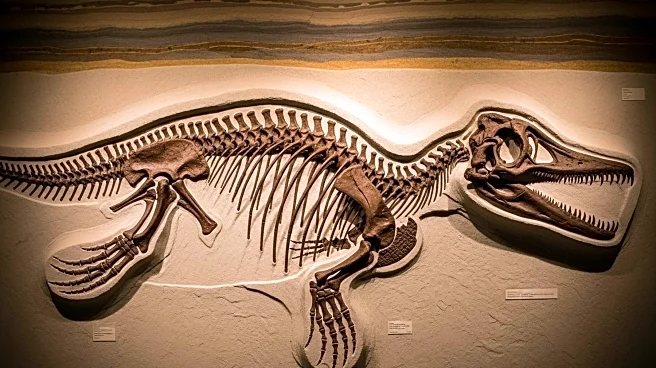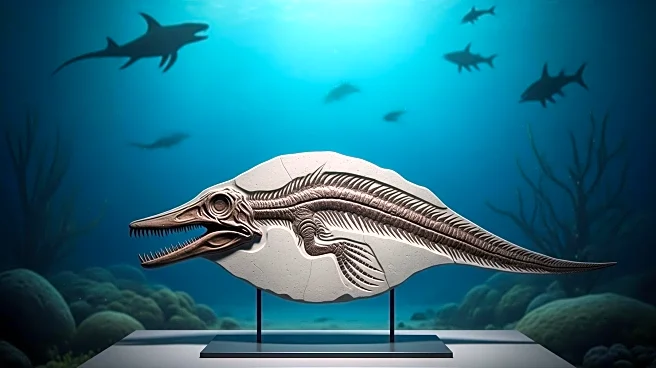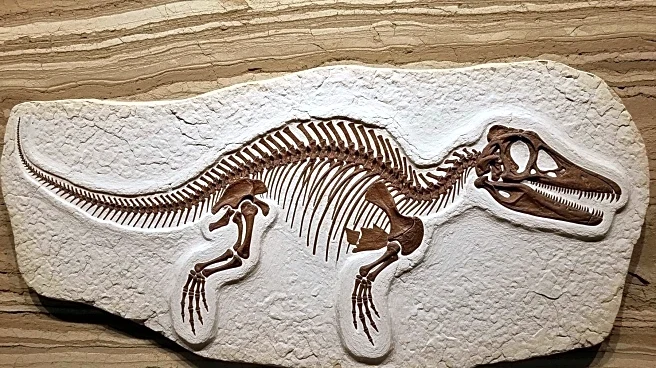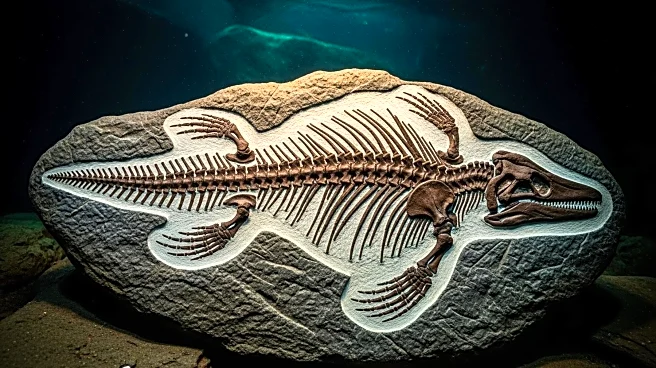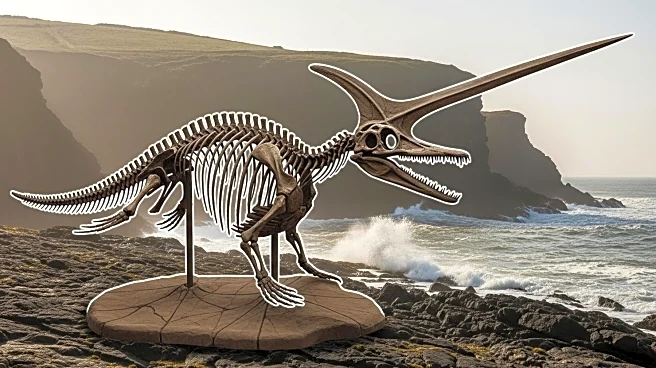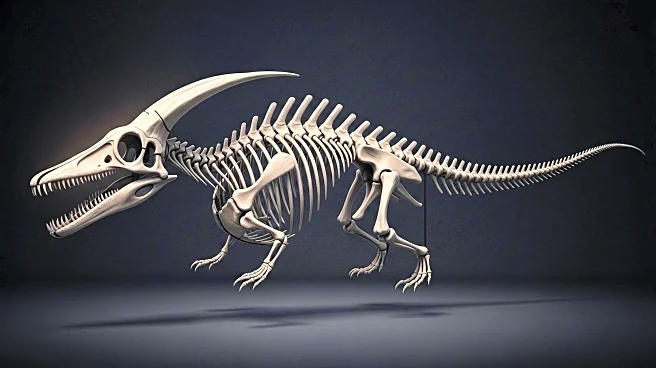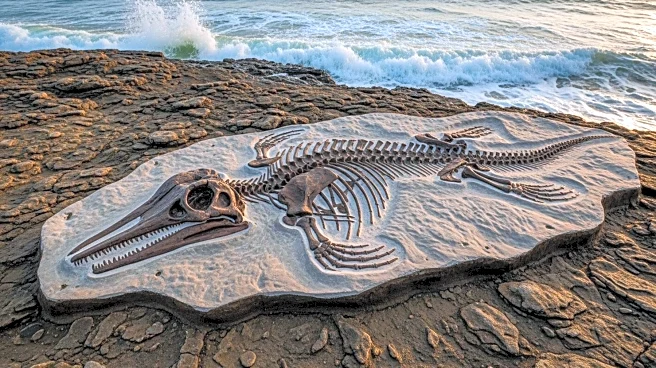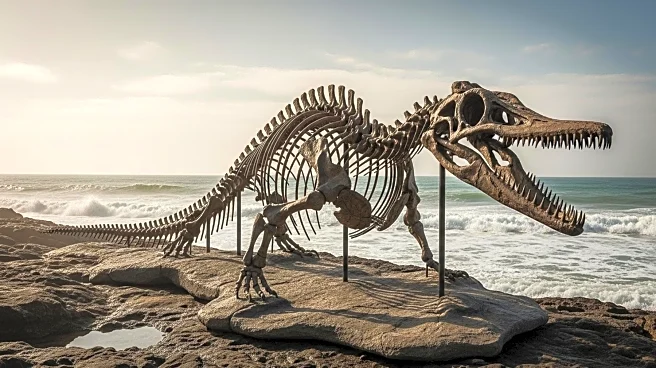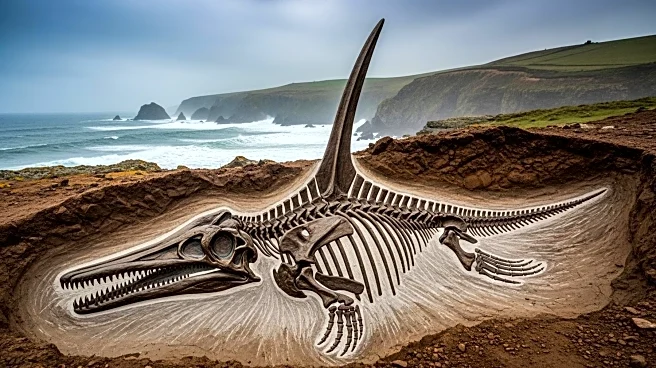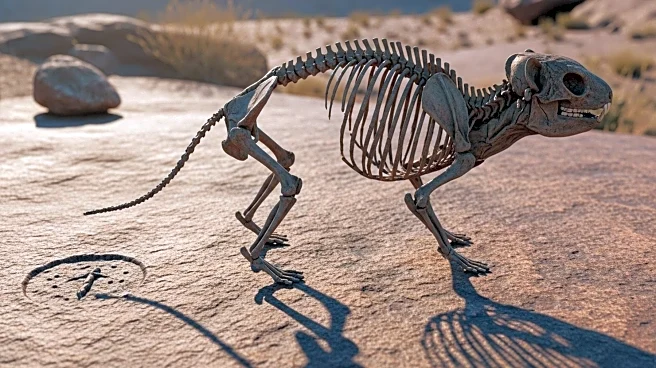What's Happening?
A new species of ancient marine reptile, named Xiphodracon goldencapsis, has been identified from fossils found in England's Jurassic Coast. This ichthyosaur, which lived approximately 190 million years ago during the Early Jurassic era, was discovered by professional fossil collector Chris Moore in 2001. The fossil set includes a skull with a large eye socket and a long, sword-like snout, features that distinguish it from other ichthyosaurs of the period. The specimen was nearly 10 feet long and lived during a time when several ichthyosaur families were going extinct. The discovery was made public following a study published in the journal Papers in Palaeontology, led by Dean Lomax, an honorary researcher at The University of Manchester, and Judy Massare, a Professor Emerita of Geology at SUNY Brockport.
Why It's Important?
The discovery of Xiphodracon goldencapsis provides significant insights into the ecological turnover during the Jurassic Period and the evolution of ichthyosaurs. These marine reptiles were active ocean predators, similar to dolphins, but with tails that moved side to side. The identification of this new species adds to the understanding of ichthyosaur diversity and their adaptation strategies during a period of extinction for many families. The fossil's preservation and unique features, such as its slender snout and narrow teeth, suggest it preyed on soft, small animals like squid. This contributes to the broader knowledge of marine life dynamics and evolutionary biology during the Jurassic era.
What's Next?
The discovery may prompt further paleontological exploration and research in the Jurassic Coast area, which is known for its abundance of fossils. Researchers might focus on uncovering more specimens to better understand the diversity and extinction patterns of ichthyosaurs. The study of Xiphodracon goldencapsis could lead to new insights into the environmental conditions and ecological niches of the Early Jurassic period. Additionally, the findings may encourage comparative studies with ichthyosaur fossils found in other parts of the world, potentially revealing global patterns in marine reptile evolution.
Beyond the Headlines
The discovery of Xiphodracon goldencapsis highlights the importance of fossil preservation and the role of professional collectors in advancing scientific knowledge. The specimen's nearly perfect three-dimensional preservation offers a rare opportunity to study the anatomy and ecological adaptations of ancient marine reptiles. This underscores the value of World Heritage Sites like the Jurassic Coast in contributing to paleontological research and education. The findings also raise questions about the factors that led to the extinction of certain ichthyosaur families, providing a deeper understanding of historical biodiversity and environmental changes.

